We use Google Tag Manager to set up most of the Google Ad Conversion Tracking we set up. There are some edge cases where we don't use Google Tag Manager, but most of it is handled via Google Tag Manager. This means it's important to know how to set up and install it on your website! In this blog post we're going to show you how to do it step-by-step with screenshots.
Creating a Google Tag Manager Account
Using the same Google Account you signed up for Google Ads with, visit https://tagmanager.google.com and after signing in select the "Create Account" button:
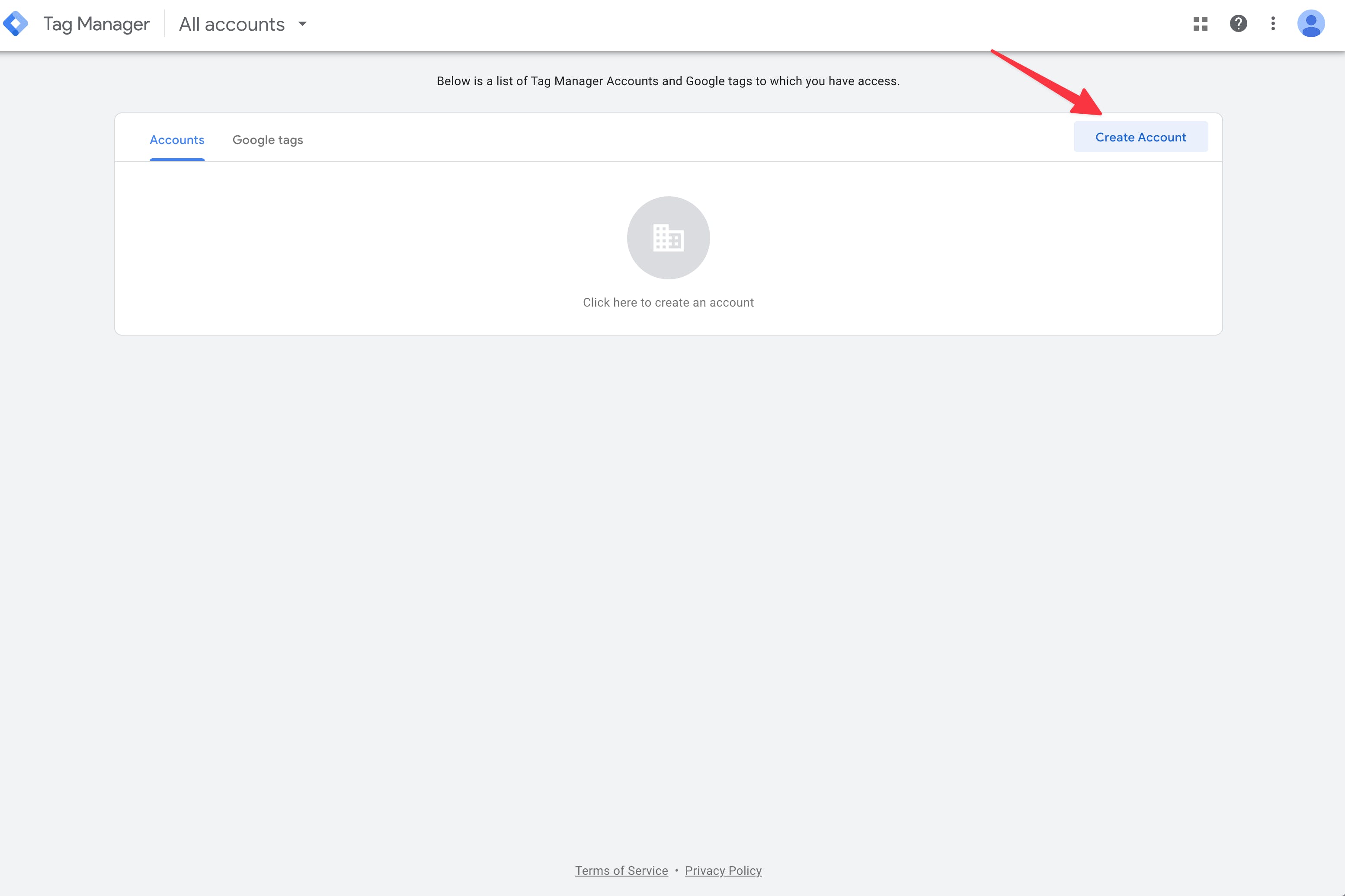
Next, enter your Account Name, select your country, container name (which is just your domain name without the https), select "Web" and then click the blue "Create" button:

After that you'll be presented with the script you need to install on your website to install Google Tag Manager:
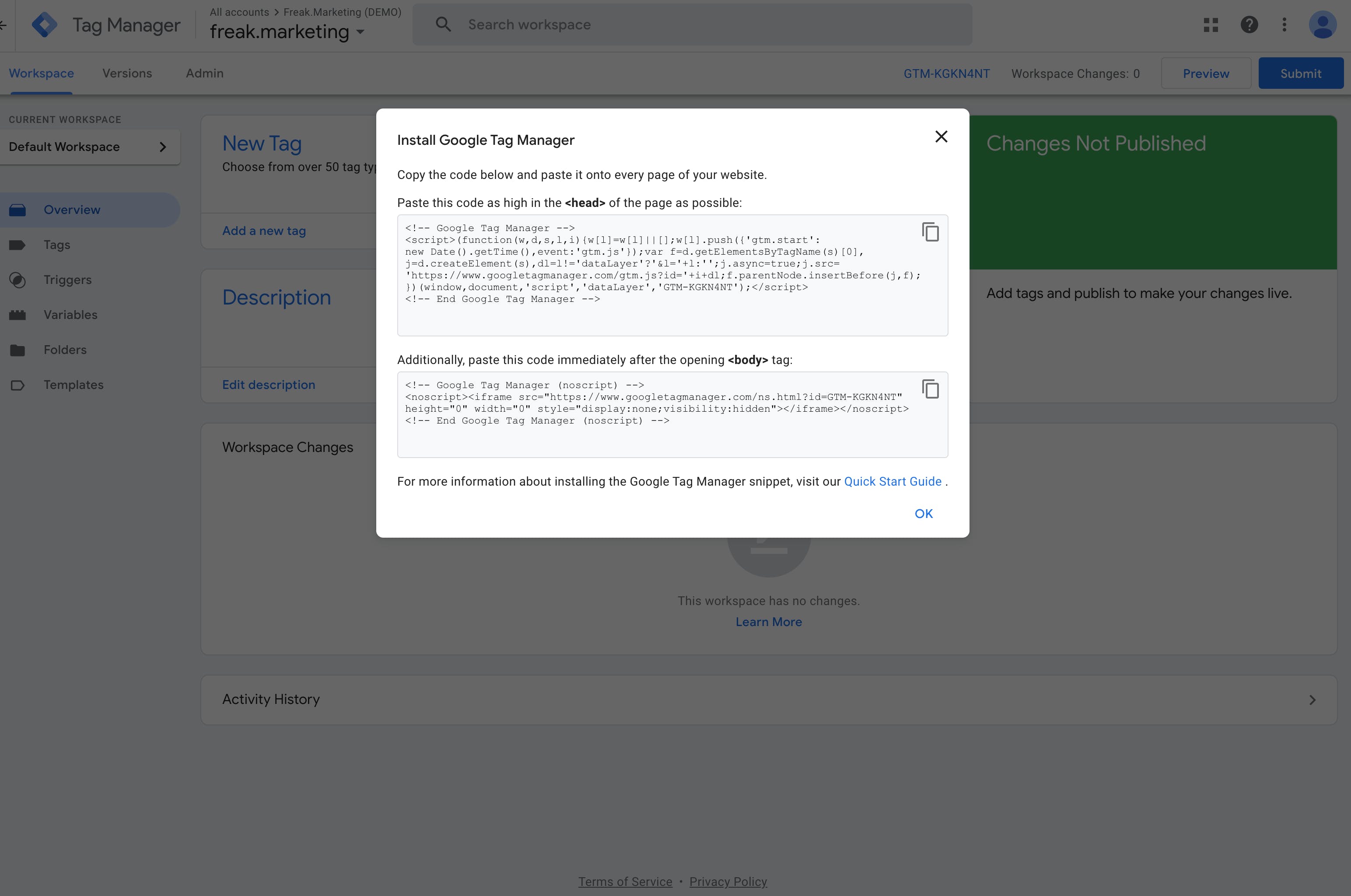
Go ahead and save those scripts in a txt file to use in the future. If you accidentally click OK before saving the script code, you can always retrieve it by going into the Google Tag Manager Container settings here:
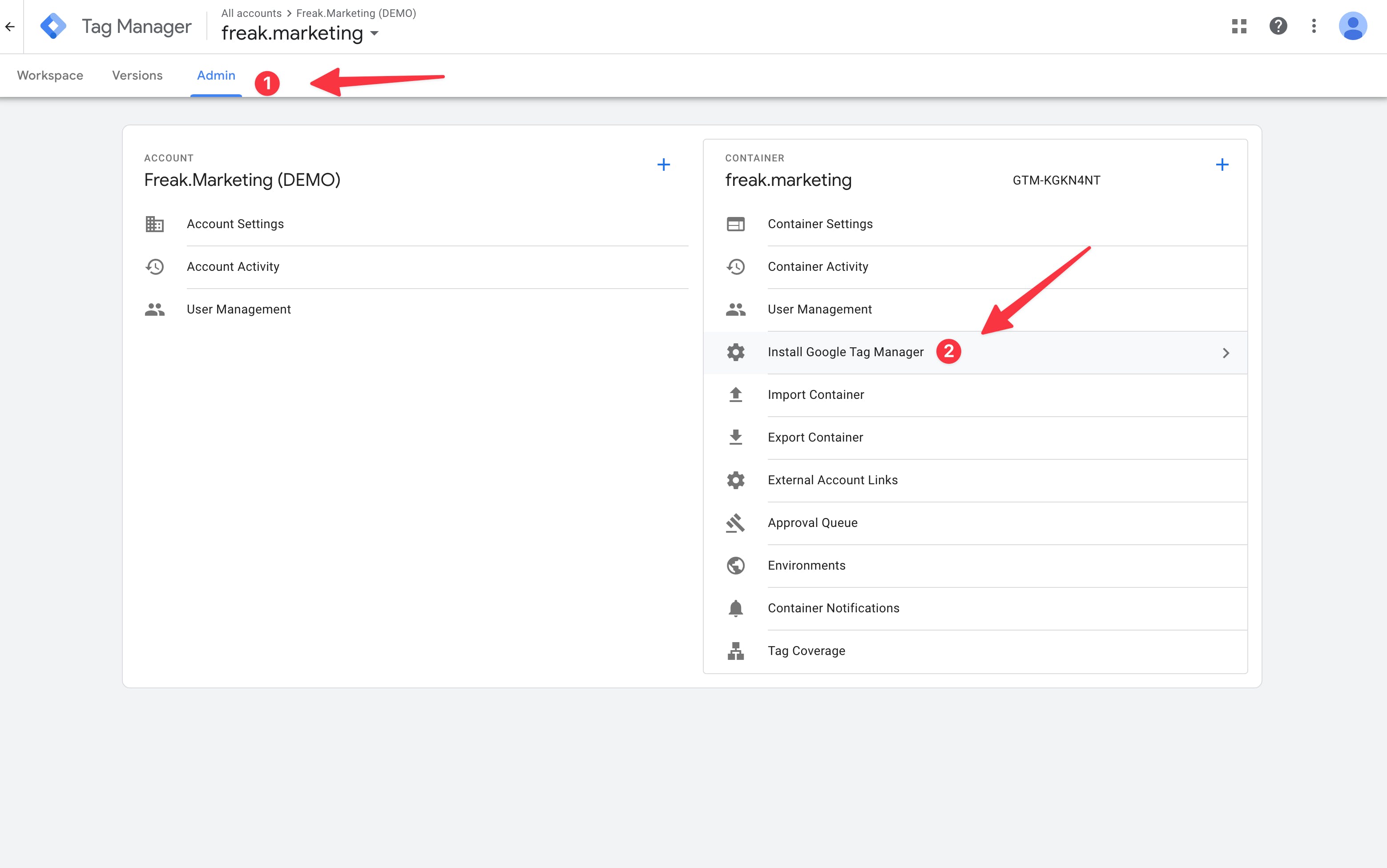
Now, let's move on to the next lesson and show you how to install the Google Tag Manager script on your website.
Installing the Google Tag Manager Script On Your Website
The first script, you want to install in the <head> tag of your website.
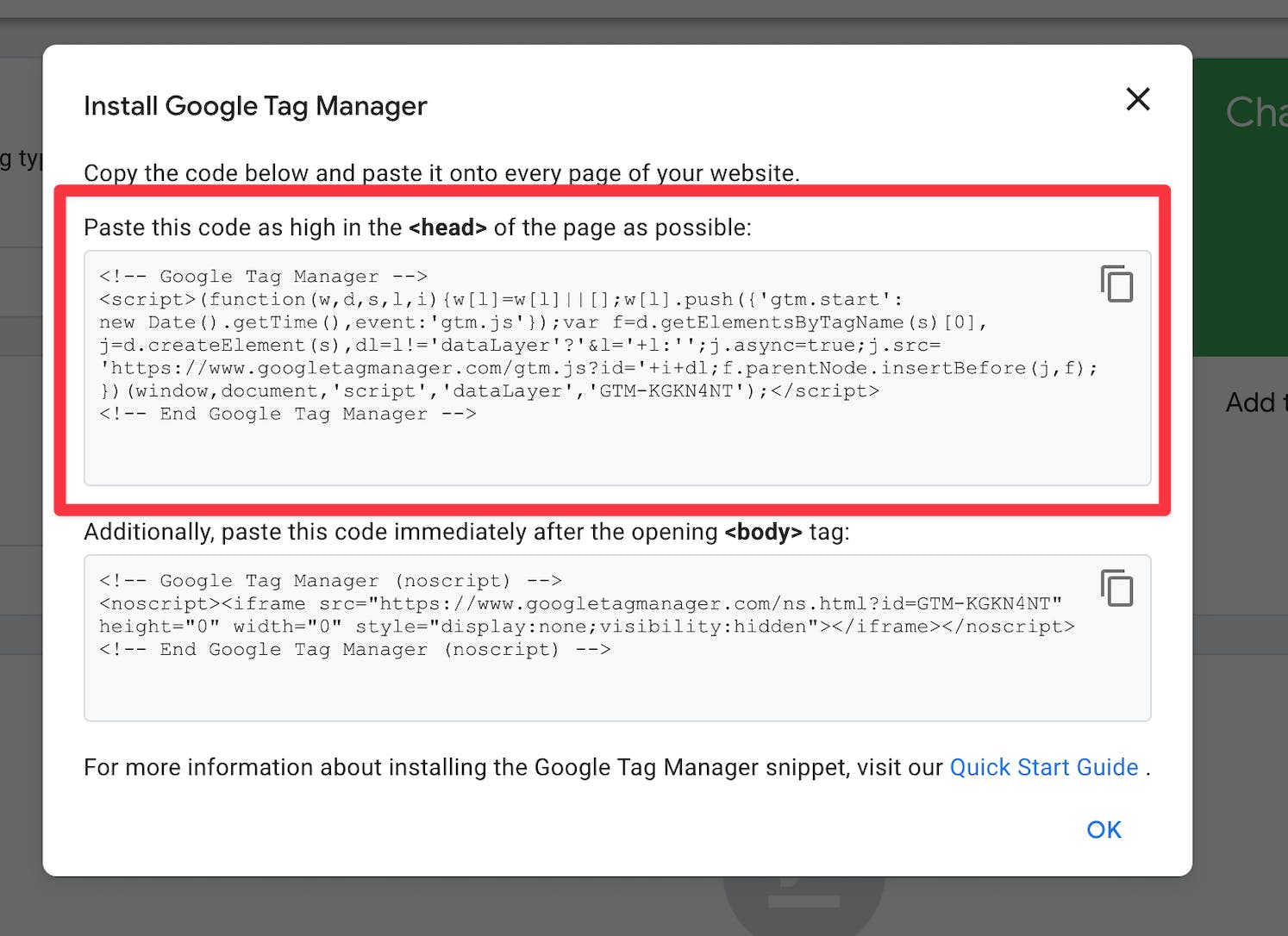
The 2nd script you want to install just below the opening <body> tag on your website:

This 2nd script is usually optional, I've seen GTM work without it. I believe the 2nd script is only meant for users who have Javascript disabled in their browser, which is very few people. So if you can't install the 2nd script, you'll probably still be in luck!
Most website builders will have either an option to add your GTM container ID (e.g. GTM-SEI3S28) or add custom code to your whole website. Since each website builder is different you will have to consult with their documentation and/or support team to get this done.
Not every website builder will allow you to install Google Tag Manager. I discuss more about what to do in this case in the last lesson of this course.
Installing Google Tag Manager On Wordpress
Since Wordpress powers 43% of the web, I made sure to include instructions to walk you through how to install GTM on your Wordpress website specifically:
Step 1
Install the "Head, Footer and Post Injections" plugin in your Wordpress dashboard:
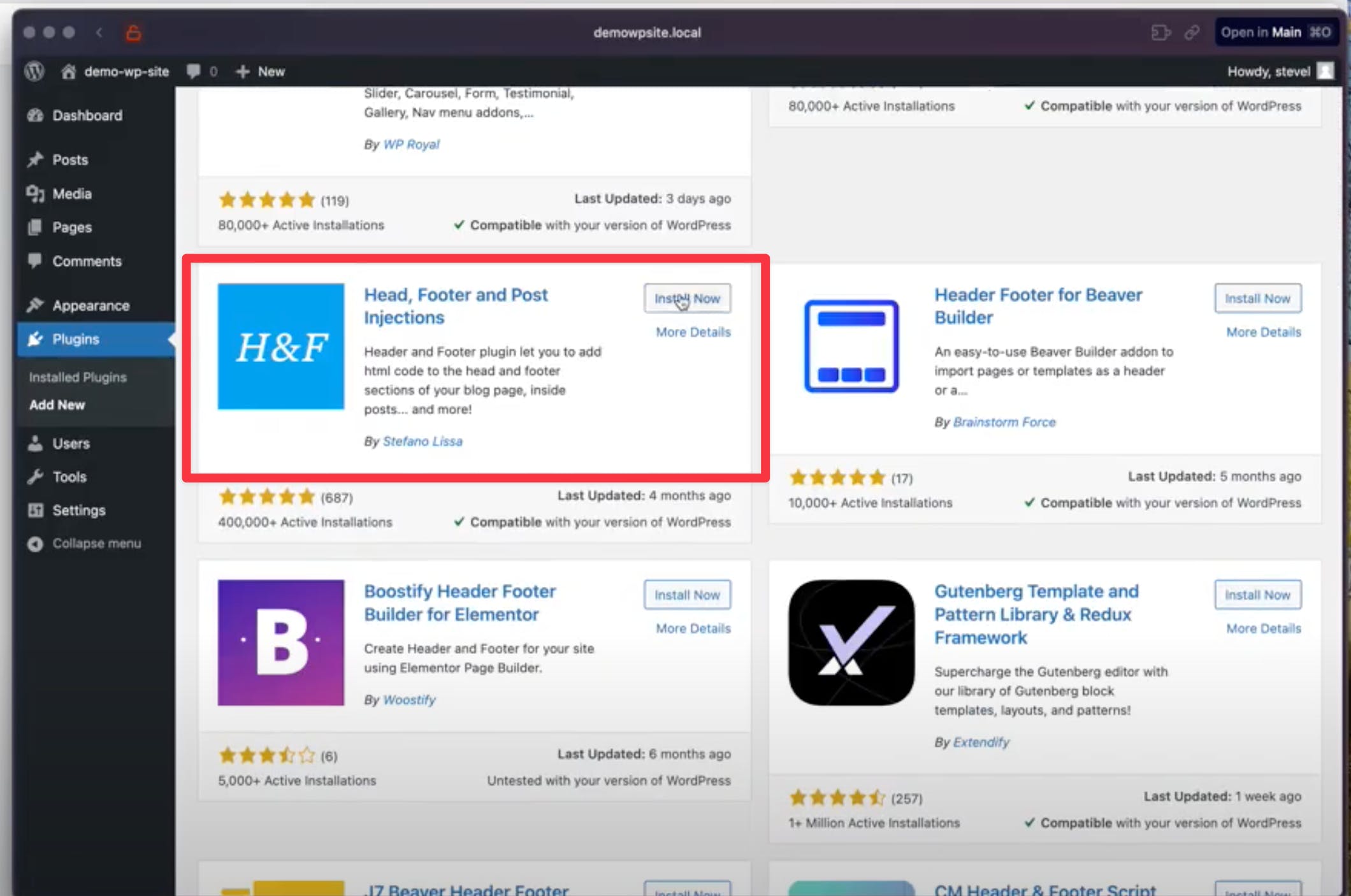
Step 2
Copy this code from your Google Tag Manager Container:
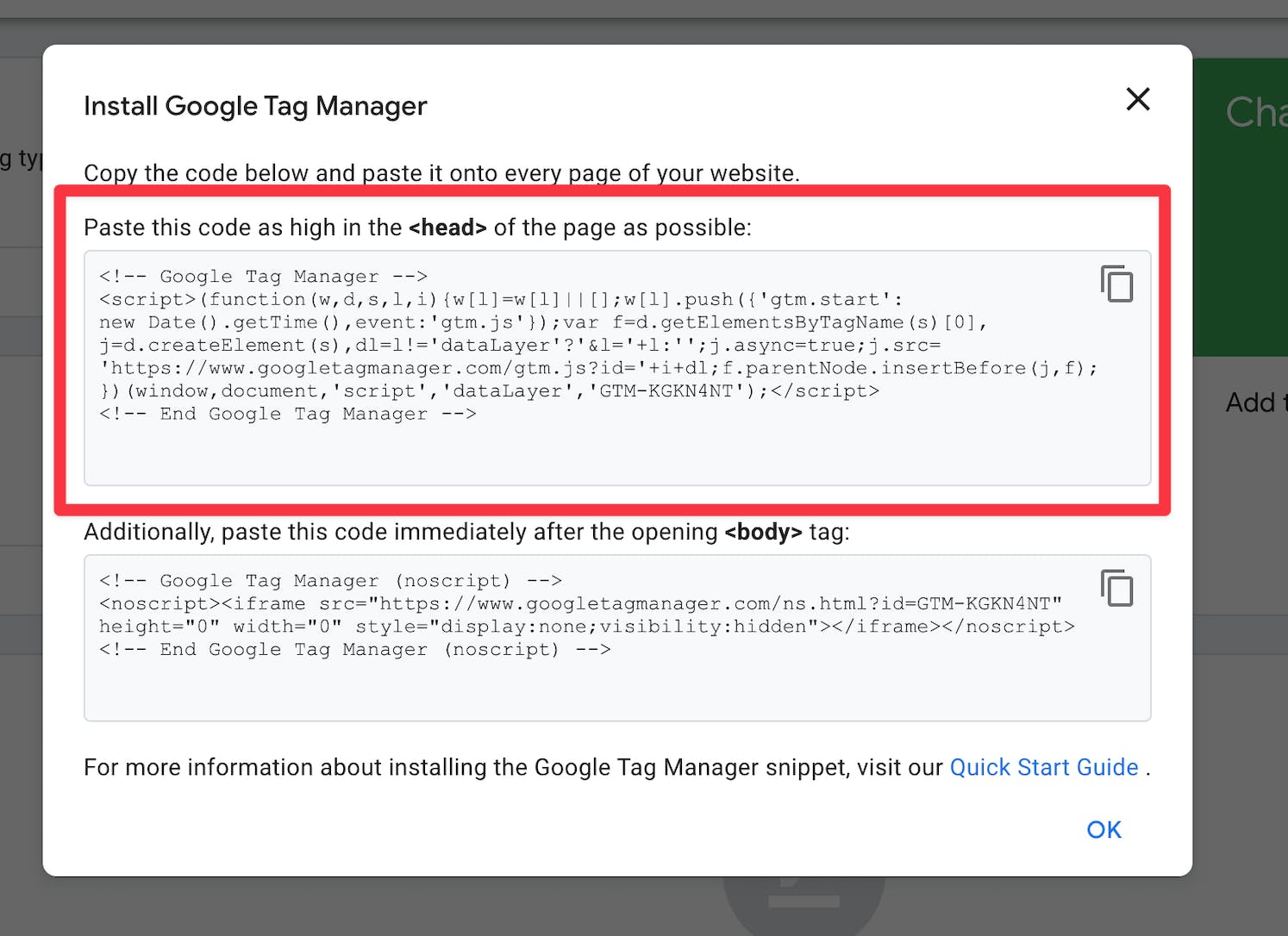
Step 3
Access the plugin settings for the "Head, Footer and Post Injections" plugin we installed in Step 1 and paste the code we copied in Step 2 here in the <head> Page Section Injection section on EVERY PAGE:
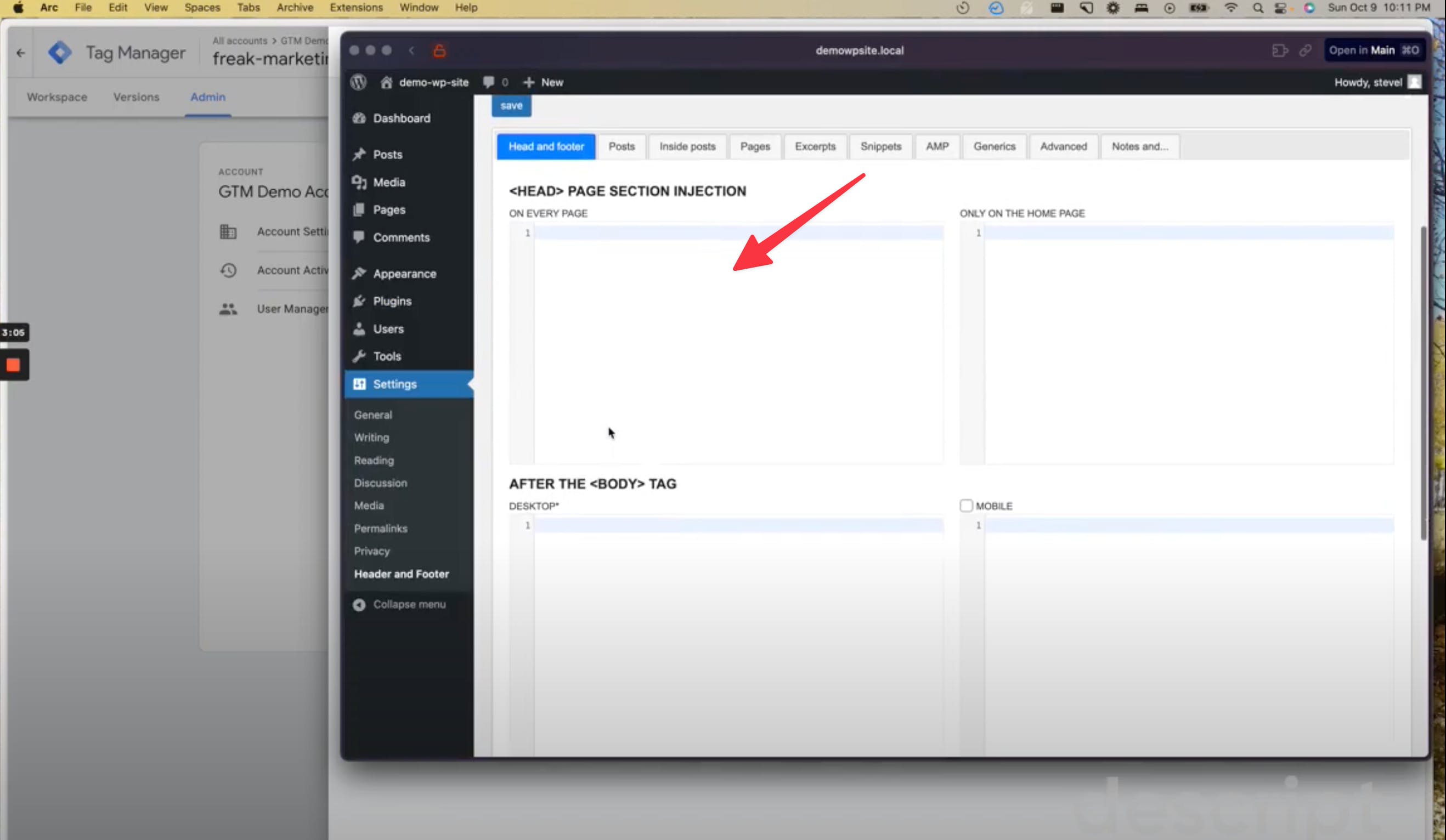
Step 4
Copy the second GTM "noscript" code here:
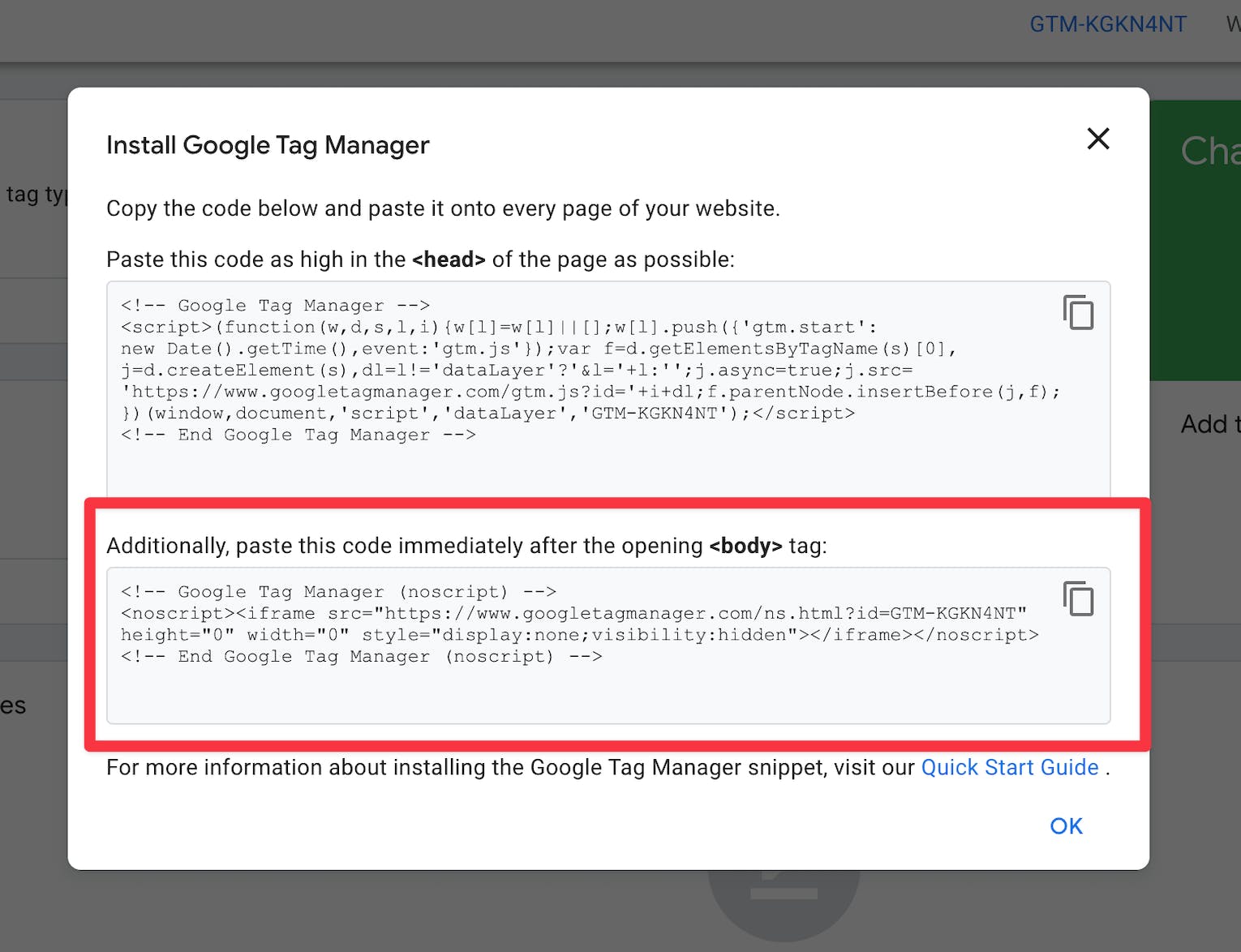
Step 5
Go back to the plugin settings for the "Head, Footer and Post Injections" plugin and paste the code in this After The <body> Tag section:
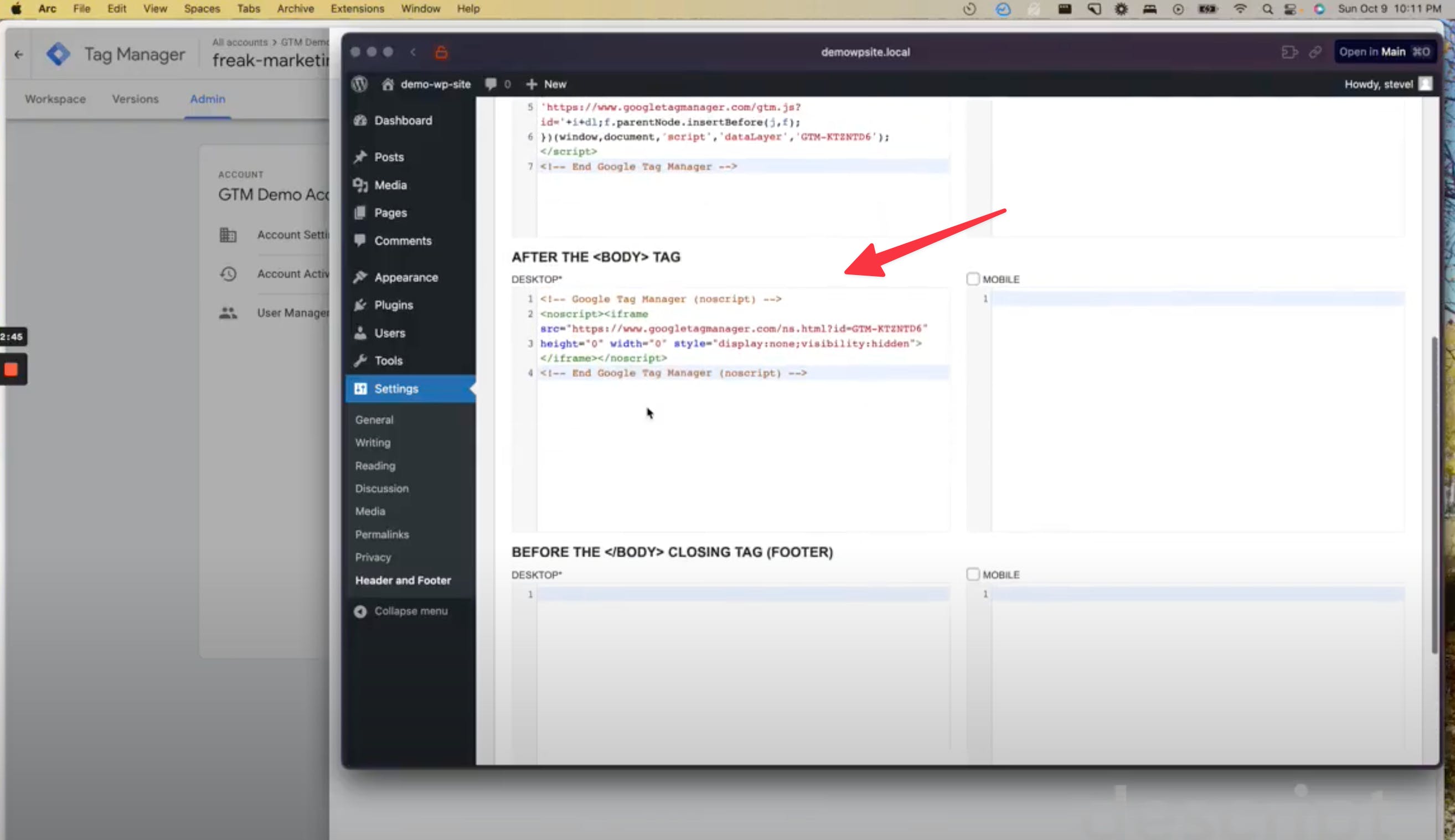
Step 6
Scroll down and click "Save" in the plugin settings for the "Head, Footer and Post Injections" plugin:
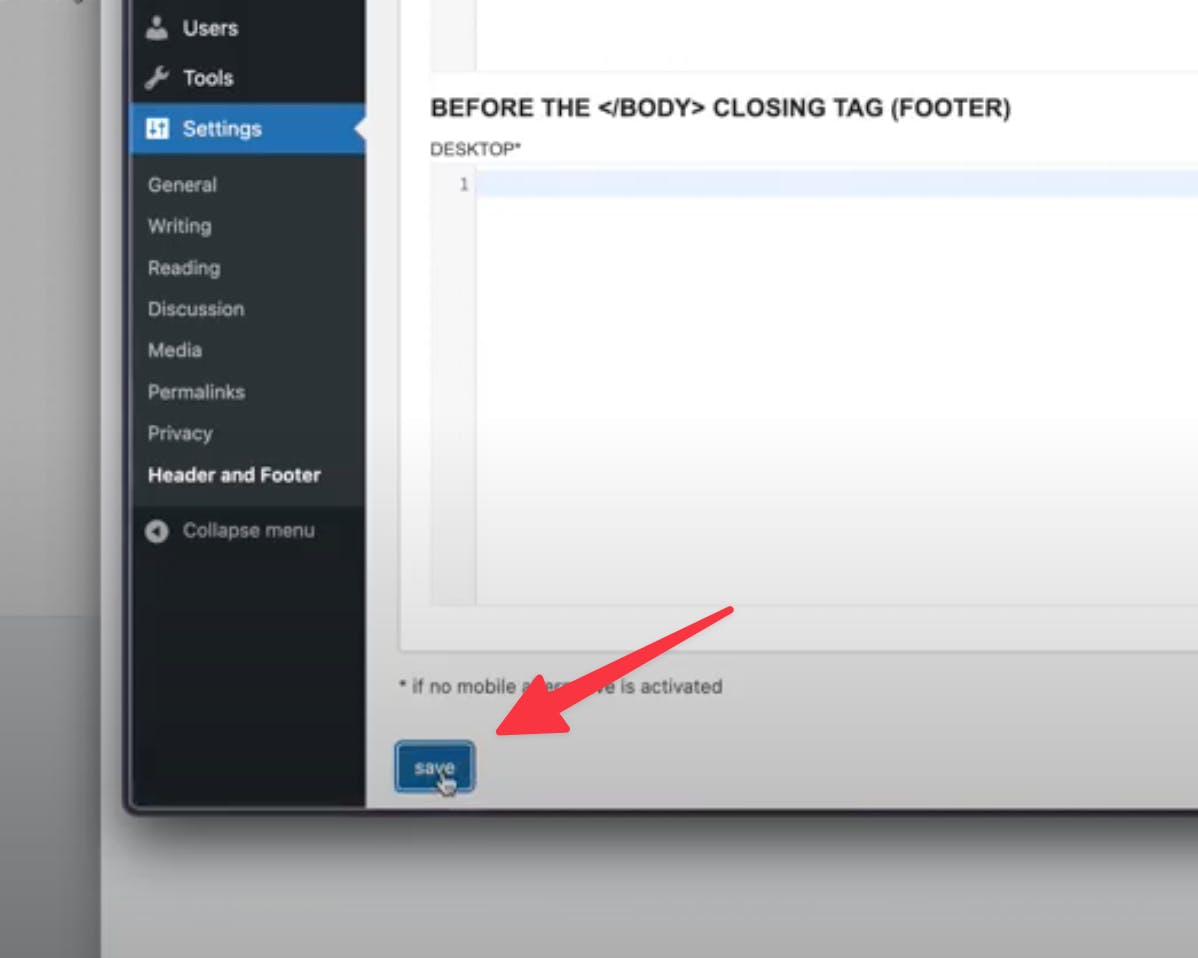
Website Platforms That Don't Let You Install Google Tag Manager
See if they have an integration with Google Analytics. Sometimes they'll have a native integration with Google Analytics since the new Google Analytics 4 will track form submission events by default for most websites.
Then you can import this GA4 conversion into your Google Ad Campaign after syncing them together.